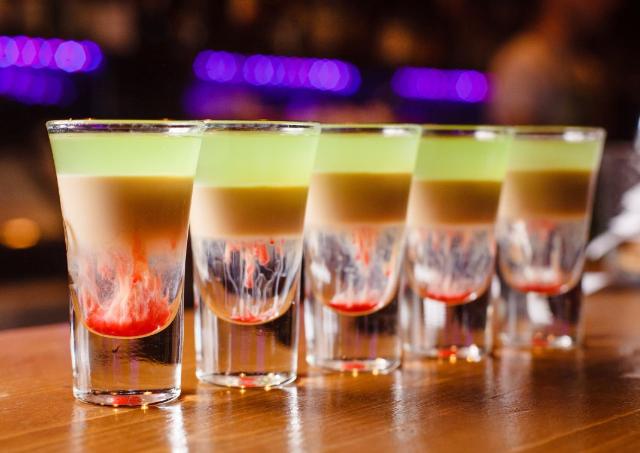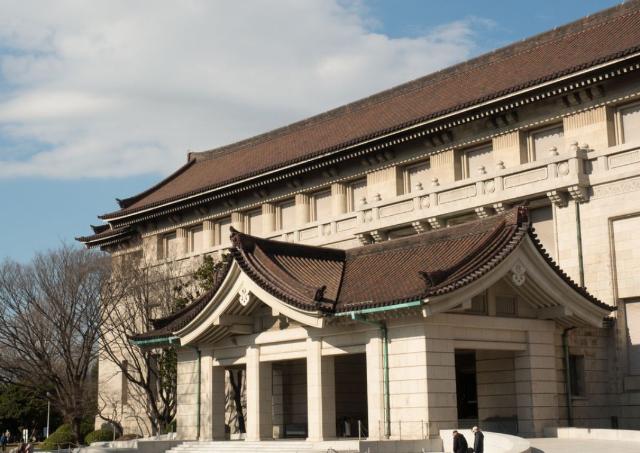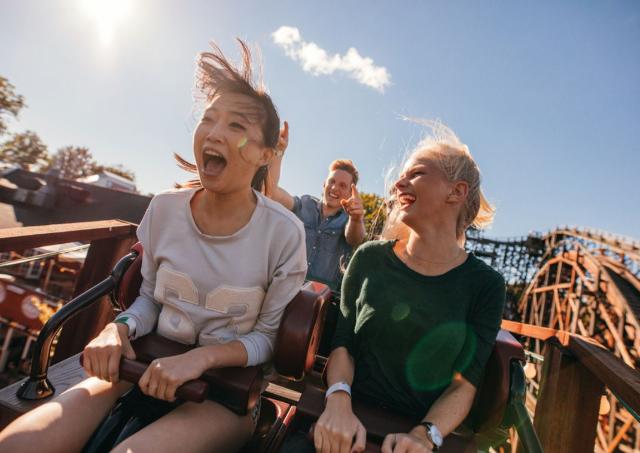Arashiyama Beyond the Bamboo Grove: Exploring Kyoto's Hidden Gems
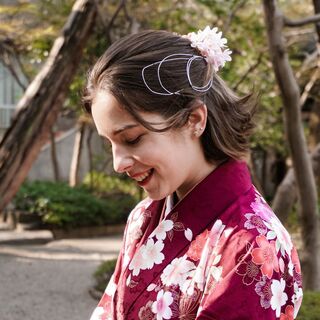
Japanspecialist
Budapest, Hungary
Arashiyama, on Kyoto’s western outskirts, blends breathtaking natural beauty with centuries of cultural heritage. While the bamboo grove is the icon, the district is equally defined by serene gardens, historic temples, and river views from the legendary Togetsukyō Bridge along the Hozu/Katsura River.
Venture beyond the main path to find artisan workshops and a quietly excellent culinary scene – from tofu houses to tea and sweets – revealing a more authentic, crowd-free side of Kyoto. Slow down here, and Arashiyama rewards you with the atmosphere travellers come to Japan to feel.
Table of Contents
- Getting to Arashiyama
- Arashiyama Bamboo Grove
- Tenryu-ji Temple
- Togetsukyo Bridge
- Sagano & Rakushisha
- Gioji Temple
- Adashino Nenbutsu-ji
- Monkey Park Iwatayama
- Artisan Workshops
- Culinary Discoveries
- Hozu River Adventures
- Seasonal Strategies
- Accommodation
- Practical Navigation
- Evening Magic
- Creating Your Perfect Arashiyama Experience
- Frequently Asked Questions
Getting to Arashiyama: Your Gateway to Kyoto’s Western Wonder
As you roll into Arashiyama, the city thins into soft river light and mountain silhouettes. Step off the train and the air shifts - fresh with cedar and the Hozu River’s breeze. Follow the gentle flow of visitors toward the iconic Togetsukyo Bridge; you’ll catch the clack of the Randen tram, the rustle of bamboo somewhere ahead, and the first shopfronts steaming with yaki-dango and matcha.
By JR (fastest from Kyoto Station)
The JR Sagano Line (San’in) Line from Kyoto Station to Saga-Arashiyama Station. It’s a quick ride (around 15–20 minutes), and from there it’s a pleasant 10–15-minute walk into the heart of Arashiyama.
By Hankyu (most scenic from downtown Kyoto)
From central Kyoto (Kawaramachi/Karasuma area), ride any Hankyu train to Katsura Station and transfer to the Hankyu Arashiyama Line. You’ll arrive at Hankyu Arashiyama Station, a short riverside stroll from Togetsukyo Bridge.
By Randen (Keifuku) tram
The vintage Randen Line ambles in from Shijō–Ōmiya Station and other downtown stops, winding through quiet neighbourhoods and offering glimpses of the surrounding mountains. It drops you at Randen Arashiyama Station, just behind Tenryū-ji Temple and near the bamboo grove - ideal if you want to wander straight into temple gardens and bamboo paths.
By bus (direct and convenient)
From Kyoto Station, Kyoto City Bus routes 28 (to Arashiyama-Tenryū-ji-mae) and 11, plus City Bus 93 and Kyoto Bus routes 61/72/83 run to central Arashiyama. Buses are handy for a point-to-point trip, but they can be slower during peak hours and weekends.
By river (romantic arrival)
For a memorable entrance, ride the Hozugawa River boat from Kameoka. Boats glide into Arashiyama a few hundred meters upstream from Togetsukyo Bridge - so you step ashore with mountains at your back and the district unfolding ahead.
With easy connections and arrivals that set the mood - train-quick, tram-charming, bus-direct, or river-romantic, Arashiyama welcomes you to linger along the river, slip into temple grounds, and lose yourself among the bamboo, making it an essential stop on any Kyoto itinerary.
Arashiyama Bamboo Grove: More Than a Photo Stop
Step off the train and the city fades into a hush of wind and wood. Bamboo stalks rise like green columns, the light turns bottle-glass soft, and the path becomes a calm passage between hill park and river. From Randen Arashiyama Station, it’s a five-minute walk along the main shopping street to the classic south approach near Nonomiya Shrine. From JR Saga-Arashiyama Station, stroll 10–15 minutes through quiet lanes to the northern end, with easy links toward Okochi Sanso Villa and Kameyama Park’s river overlooks.
A Short Backstory & Ongoing Care
Long before it went viral, this corridor belonged to aristocratic villa landscapes on Kyoto’s western fringe. In the Heian period (794–1185), nobles retreated to Arashiyama’s rivers, maples, and bamboo – the ancestor of today’s grove. What keeps it pristine now is steady, local stewardship: crews thin older or storm-damaged culms, manage fresh shoots to protect the canopy, and continuously repair traditional bamboo fencing that shields shallow roots and guides foot traffic. Offcuts are often repurposed into charcoal or crafts, turning maintenance into a small circular economy.
When to Go (and How to Listen)
The path is open 24 hours and free. For breathing room and soft light, aim for sunrise until about 8:30 AM, or visit after 6 PM. Light rain or mist deepens the greens and quiets the crowd. The grove’s rustle and creak are so distinctive they’re celebrated among Japan’s “100 Soundscapes.” Plan restroom stops at the stations or Kameyama Park before entering, since the path itself has no facilities.
Treat the grove as you would treat a quiet sanctuary: stay on the path, avoid touching or carving the culms, keep voices low, and skip tripods at peak times. If you’re photographing, stand mid-path facing slightly north just after sunrise for soft backlight, then put the camera away and simply enjoy the stroll.
Night Illumination 2025: Arashiyama Tsukitoro
The celebrated bamboo grove light-up is back this year: Arashiyama Tsukitoro, running October 1–31, 6:00–9:00 PM daily (last entry at 8:30 PM). Admission is 1,500 JPY per adult, with proceeds supporting community and preservation efforts such as fence restoration and amenity upkeep—a beautiful, purposeful way to experience the grove after dark.
Tenryu-ji Temple: Kyoto’s Zen Masterpiece, Beyond the Bamboo
Step out of the Bamboo Grove and you’re just steps from Tenryu-ji’s gates – a shift from whispering culms to painted dragons and mirror-still water. One of Japan’s most important Zen temples and a UNESCO World Heritage landscape, Tenryu-ji Temple anchors Arashiyama not only with spiritual weight but with a garden composition that has guided Japanese taste for centuries.
Inside the Temple Buildings
Inside, look up in the Hatto (Dharma Hall) for the monumental Cloud Dragon ceiling painting, executed in the nihonga tradition so the dragon’s gaze (the classic happō-nirami effect) follows you around the room. In adjoining halls, you’ll see sliding-door fusuma-e – ink and mineral-pigment works that pair crisp line with empty space, a visual echo of Zen’s simplicity. The main Buddha image of Shakyamuni, early carvings, and curated temple treasures round out a collection that spans eras of rebuilding and renewal.
The World Heritage Garden
Outside, the 14th-century Sōgenchi Pond Garden still reads as its creator intended: a living scroll of shakkei (“borrowed scenery”) that folds the Arashiyama ridgeline into the foreground of water, islands, and stone groupings. The planting palette is intentionally varied: black and red pines for structure; maples and cherries for seasonal drama; camellias, azaleas, and banks of moss for texture; lotus and irises to animate the pond through late spring and summer. Each season rewrites the view: petal showers in April, luminous greens in the rains, blazing vermillions in autumn, and a hush of snow that makes the rocks read like mountains.
We recommend arriving at opening (8:30 AM) when mist often clings to the mountains and reflections are at their calmest. And if you’ve just walked the bamboo grove, consider entering from the north side so your route flows naturally from bamboo to garden to halls – an elegant way to experience Tenryu-ji as a complete work of art.
What makes Tenryu-ji special:
Original 14th-century garden design still legible and meticulously kept
Museum-worthy interiors: Cloud Dragon ceiling, fusuma-e, and historic temple treasures
A masterclass in shakkei: mountains, water, stone, and pine in perfect proportion
Quiet corners for seated reflection and tea at Shigetsu (Zen vegetarian cuisine)
Seasonal botany that transforms the same view four times a year
Japanspecialist tip: Opt for the combination ticket (garden + interior). The small surcharge unlocks the halls and artwork – and the dialogue between painting, architecture, and the garden’s borrowed scenery is exactly what makes Tenryu-ji unforgettable.
Togetsukyo Bridge: Romance and History Over the Hozu River
Crossing Togetsukyo Bridge feels like stepping into a painted scroll: the river spreads wide and silver, boats drift in the current, and the mountains cradle the light so sunset dissolves from gold to indigo. Built more than a millennium ago and lovingly rebuilt across the centuries, the “moon-crossing” bridge is Arashiyama’s grand threshold, where city sounds fall away and lush mountain landscapes take over. Midway, the river changes names with the scenery: Ōi upstream, Hozu through Arashiyama, Katsura farther south – one waterway with three poetic identities.
Cross to the western bank
Follow the planks toward the far shore and slip into a quieter Arashiyama – ryokan eaves and lanterns, tatami rooms facing the water, the promise of steaming baths. This is where you’ll find Hanaikada, a classic ryokan with natural hot springs almost at the bridge’s foot, and Fu Fu No Yu, a modern public onsen a short stroll away for day-soakers. This is also where many traditional restaurants serve kaiseki meals with river views, along with the ultra-secluded Hoshinoya Kyoto (Arashiyama), reached by guests-only riverboat from the landing near Togetsukyō (with a discreet footpath option).
Sip, linger, and look at art
Back on the main side, grab a cup at % Arabica Arashiyama – the flagship of the minimalist global coffee company facing the bridge – or wander a few minutes inland to Bread & Espresso (Arashiyama Garden) for buttery pastries in a thatched-roof minka house with a quiet courtyard. Then carry your cup back to the embankment to watch boats and mountains trade colours. If you’re lingering for a splurge, the riverfront hides high-end kaiseki and seasonal river-fish menus with window-wide views. Drift into the calm, contemporary spaces of the Fukuda Art Museum – and next door, the Saga Arashiyama Museum of Arts & Culture – where galleries frame the bridge like a living artwork. If you’d spend a calm night in a traditional setting, riverside stays like Arashiyama Benkei are available.
Togetsukyo bridge highlights include:
Spectacular sunset views or early morning mist over the Hozu River
Access to traditional riverside dining
Historical significance dating back over a millennium
Perfect photo opportunities without bamboo grove crowds
Stalls for rowboat rentals and booking river-ride tours
Hanaikada and Fu Fu No Yu for hot-spring bliss
Connection to Iwatayama Monkey Park and mountain trails
% Arabica and Bread & Espresso for a specialty coffee with a view
Sagano & Rakushisha: Poetry in a Persimmon Grove
Slip beyond the main sights of Arashiyama, and embark on the old Saga-Toriimoto Preserved Street into the hills of Sagano: wooden lattices, old, thatched farmhouses, and low eaves hiding craft shops selling bamboo work, incense, and local sweets. The lanes feel storybook-quiet, just the kind of place that drew poets and hermits.
The Hut of Fallen Persimmons
A short detour brings you to Rakushisha (the “Hut of Fallen Persimmons”), the rustic retreat of Mukai Kyorai, disciple of Matsuo Basho. Here, the humble thatched cottage where Basho stayed several times—most notably in 1691, when he spent around seventeen days here and wrote Saga Diary. Rakushisha offers an intimate glimpse into Japan’s literary soul; in late autumn, when the persimmons actually drop, you can see the scene that sparked some of his most beloved verses. Inside, you’ll find displays of original manuscripts, and the garden is a peaceful respite where you can try writing a few lines of your own.
Literary treasures at Rakushisha:
Original manuscripts from Matsuo Basho’s stay
Beautiful persimmon grove that inspired the famous haiku
Traditional architecture is preserved exactly as in Basho’s time
Quiet garden inspiring poetry writing
Historical connection to Japan’s golden age of literature
The cottage keeper often shares stories about Basho’s time here (Japanese helps), but even without words the atmosphere speaks volumes. A visit to Rakushisha Hermitage can spark new travel ideas for anyone drawn to Japan’s literary and cultural history. When you’re ready to continue, the same street leads gently onward toward Giō-ji and deeper into Sagano’s temple country.
Gioji Temple: Tragedy and Beauty in Moss and Maple
This tiny temple tells one of Japan’s most famous love stories while offering some of Kyoto’s most photographable autumn colours. Dedicated to a dancer who became a nun after losing her lover’s affections, Gio-ji Temple (also known as Gioji) pairs an intimate moss garden and lacework of maples to create an almost fairy-tale atmosphere.
The temple’s small size means it never feels crowded, yet its beauty rivals much larger and more famous sites. The contrast between the tragic story and the serene beauty creates a uniquely Japanese aesthetic experience that captures the bittersweet nature of life.
Gio-ji Temple highlights:
Legendary Heian-period love story
Spectacular autumn maple colours
Intimate moss garden design
Traditional thatched-roof temple architecture
Peaceful meditation opportunities
Japanspecialist tip: The temple is particularly stunning in late November when the maple leaves reach peak colour. Early morning visits offer the best light for photography and the most peaceful atmosphere.
Adashino Nenbutsu-ji: Stone Buddhas and Ancient Secrets
More than 8,000 weathered stone figures cluster on terraces, raised for souls with no family to remember them – an austere, compassionate landscape that turns silence into ritual. Each late summer, the Sento-Kuyō memorial lights thousands of candles among the statues, a river of flame that seems to set the hillside breathing. It’s held on the last Saturday and Sunday of August, in the evenings. Given its spiritual essence, we recommend to approach this temple with respect and quiet contemplation. The atmosphere here can be quite moving, especially during late afternoon when shadows fall across the stone figures.
A Quieter Bamboo Grove
At the back of the grounds, a small bamboo grove offers an intimate counterpoint to Arashiyama’s main avenue: narrow and well-kept gravel, close-set moso culms, birdsong in the canopy. The scale invites you to slow down, feeling the bamboo rather than photographing it – before the trail returns you to stone and moss.
What sets this area apart:
Walking approach through Saga-Toriimoto that preserves Meiji-era streetscapes
A living literary landscape with Rakushisha, and pocket temples like Giō-ji
Adashino Nenbutsu-ji with over 8,000 ancient stone monuments and statues
Peaceful bamboo grove without tourist crowds
Annual Sento Kuyo ceremony in August with thousands of lanterns
Monkey Park Iwatayama: Wild Encounters Above the Treetops
Perched on the slopes of the Arashiyama mountains, Monkey Park Iwatayama offers an unforgettable wildlife experience just a short walk from the district’s main attractions. This unique park is home to over 100 Japanese macaques, who roam freely in their natural habitat, providing visitors with a rare opportunity to observe these playful creatures up close.
The journey to the park involves a gentle hike through lush forest, rewarding you with breathtaking views of Kyoto and the surrounding mountains from the summit. Whether you’re a nature lover, a family with children, or simply curious about Japan’s native wildlife, Monkey Park Iwatayama combines adventure, education, and stunning scenery, all within easy reach of Arashiyama’s other highlights.
Artisan Workshops: Keeping Ancient Crafts Alive
Arashiyama hosts several traditional craft workshops where you can observe and participate in arts that have remained unchanged for centuries. These experiences offer hands-on connections to Japanese culture that go far deeper than typical tourist activities and great souvenir shopping!
Traditional crafts you can experience:
Bamboo lantern / basket weaving workshops with local artisans in several spots
Bamboo weaving: the Ishikawa Take-no atelier lets visitors watch artisans on the upper floor
Traditional dyeing: Yūsai-tei (Yusai Okuda Studio): techniques using natural materials
Pottery shop: Kotouen: long-running with atelier presence in central Arashiyama
Local ceramicist: Hasegawa Shouichi for an atelier encounter
Incense making: Tenkodō Sagano: hands-on zukō powder incense)
Calligraphy lessons in historic settings via local providers
Some of these workshops are located in beautifully preserved traditional machiya or thatched-roof minka houses, offering an authentic atmosphere for learning Japanese crafts.
The bamboo weaving workshops are particularly fascinating, as artisans explain how different bamboo varieties serve specific purposes, from tea ceremony implements to architectural elements. These sessions typically last 2-3 hours and result in a unique souvenir you actually created.
Culinary Discoveries: Beyond Tourist Restaurant Menus
From years of guiding guests in Arashiyama, we’ve learned the best meals hide in plain sight – steaming yudofu at humble tofu houses, handmade soba with river views, river-fish tempura in season, and dessert cafés that take tea seriously. Below are concrete, field-tested picks we regularly book and weave into your day.
Our short list:
Yudōfu, simply done: Yudōfu Sagano: set menus in a traditional setting; comforting, unpretentious
Soba with a view: Arashiyama Yoshimura: handmade soba overlooking Togetsukyo Bridge and the river (go early to avoid queues)
Tofu on the hillside: Shoraian: serene tofu-centric courses above the Hozu River; reserve ahead
Seasonal river fish: Look for ayu (sweetfish) in summer at riverside spots; tempura or salt-grilled
Coffee & tea stops: % Arabica Arashiyama (riverside flagship); CHAVATY (modern tea salon & sweets); eX café (grill-your-own dango, warabi-mochi); Bread & Espresso (Arashiyama Garden) for pastries in a historic thatched residence
One splurge, if you want it: Kyoto Kitcho Arashiyama: destination kaiseki in a garden villa (book far in advance)
Tell us your must-haves (view, dietary needs, budget), and we’ll sequence these stops to match your Arashiyama route – e.g., soba with a view after the bridge, tofu kaiseki at sunset, then tea and sweets by the river. When a spot is walk-in only, we can help to plan in your queue time around nearby sights, so you don’t waste a minute.
Hozu River Adventures: Scenic Beauty and Boat Rides
Slip onto the Hozu River and Arashiyama rearranges itself: granite walls close in, cedars lean over jade water, and town noise falls behind. Traditional Hozugawa boats – run here for over 400 years – glide (and sometimes skim) through quiet pools and quick riffles, giving you a river-level view of the district’s wild heart.
Boatmen still work with long wooden poles and oars, reading the current as their teachers did, and sharing stories of the gorge as monkeys scramble on sun-warmed rock and hawks circle overhead.
River experience highlights:
Traditional boats using time-honoured techniques
Wildlife moments (monkeys, raptors) in their natural setting
Hidden gorges you can’t see from the road or riverside paths
Cultural immersion with locally trained boatmen
Seasonal beauty: blossom, lush summer greens, blazing maples, winter hush
Japanspecialist tip: book your boat ride in advance, especially during the cherry blossom and autumn seasons. The experience takes about 2 hours and provides perspectives of Arashiyama impossible to achieve on foot. The easiest access is by JR: ride the Sagano (San’in) Line to Kameoka Station, then board upriver and float back to Arashiyama near Togetsukyo Bridge.
Prefer to stay on calmer water? Around Togetsukyo Bridge, you can rent small rowboats for short, quiet paddles on the broad river – nice at golden hour before dinner.
Seasonal Strategies: When to Visit Arashiyama
Each season transforms Arashiyama into a completely different destination, and timing your visit correctly can mean the difference between fighting crowds and having magical experiences.
Spring (March-May)
Cherry blossoms create tunnel effects along lesser-known temple paths, but avoid peak hanami weekends when crowds become overwhelming.
Summer (June-August)
Early morning visits offer comfortable temperatures and dramatic mist effects over the river. Evening visits during summer festivals provide unique cultural experiences.
Autumn (September-November)
The maple colours peak in late November, but early autumn offers comfortable weather with fewer crowds and still-beautiful foliage.
Winter (December-February)
Snow transforms the bamboo and temple grounds into winter wonderlands, with virtually no crowds and incredibly peaceful atmospheres. Visitors can spend quite some time wandering the snow-covered bamboo and temple grounds.
Japanspecialist tip: visit in late autumn and early winter, when the maple leaves create carpets of red and gold, temperatures remain comfortable for walking, and the tourist crowds have largely departed.
Photo credits: Hoshino Resorts
Accommodation: Where to Stay in Arashiyama
Arashiyama’s accommodations are as diverse and inviting as the district itself, offering visitors a chance to experience Kyoto’s western outskirts in comfort and style. For those seeking an authentic taste of Japanese hospitality, traditional ryokans provide tatami-matted rooms, soothing baths, and tea in garden settings; modern hotels and guesthouses add contemporary comforts with easy access to temples, the Bamboo Grove, and Togetsukyo Bridge.
Whether you’re after a peaceful retreat or a culturally immersive stay, Arashiyama’s range of lodging options ensures the perfect base for exploring this enchanting corner of Kyoto.
Our quick picks
Hoshinoya Kyoto: guests-only riverboat arrival; every room faces the Ōi River
Suiran, a Luxury Collection Hotel: luxe riverside hideaway steps from Tenryū-ji
Muni Kyoto: design-forward rooms with bridge-and-river views
Hanaikada: classic onsen ryokan by the bridge, with seasonal kaiseki
Ryōtei Rangetsu: intimate riverside tatami stay, polished service
Arashiyama Benkei: beloved ryokan by the water (check current operating status)
The GrandWest Arashiyama: spacious suites near Hankyū Station, ideal for families/longer stays
Arashiyama House MAMA: ten-room, design-led boutique in a renovated former Hankyu retreat
Tell us your vibe (quiet retreat, traditional ryokan, family space, or modern boutique) and budget, and we’ll match you to the right stay and sync dinner/onsen times with your itinerary.
Practical Navigation: Getting Around Like a Local
Arashiyama’s layout can confuse first-time visitors, but understanding the district’s geography opens up exploration possibilities that most tourists miss entirely.
Transportation tips:
Arrive via Keifuku Electric Railroad for the most scenic approach
Rent bicycles near Togetsukyo Bridge for efficient temple hopping
Use the river paths for peaceful walks between major sites
Consider the scenic train from central Kyoto during autumn
Take a rickshaw ride through the Bamboo Grove
Walk whenever possible – many treasures hide along pedestrian paths
For accurate navigation and to avoid misleading routes when exploring Arashiyama, use Google Maps. The bicycle rental shops near the bridge offer excellent maps highlighting lesser-known attractions. We recommend asking for the “local recommendations” map, which includes family restaurants and artisan workshops rarely mentioned in guidebooks.
Evening Magic: When Day Trippers Depart
Arashiyama transforms completely after 4 PM when day-trip tour buses depart and the district returns to its traditional rhythm. Evening visits reveal a completely different character, with lantern-lit temple grounds and riverside restaurants creating intimate dining experiences.
Several temples offer evening illuminations during peak seasons, while traditional restaurants begin serving elaborate dinner courses that showcase seasonal ingredients. The bamboo grove itself becomes almost meditative in the evening light, finally offering the peaceful experience most visitors seek but rarely find during peak hours.
After a day of exploration, visitors can also unwind by visiting a traditional public bathhouse in Arashiyama, experiencing a unique aspect of Japanese culture.
Evening advantages:
Dramatically reduced crowds at all major sites
Temple illuminations during special seasons
Intimate dining experiences at riverside restaurants
Peaceful bamboo grove exploration
Authentic local atmosphere as the district returns to daily life
Creating Your Perfect Arashiyama Experience
The secret to maximising Arashiyama lies in treating it as a full-day cultural immersion rather than a quick bamboo grove photo stop. Plan for 6-8 hours to properly explore the district’s temples, participate in a craft workshop, enjoy a traditional meal, and experience the evening transformation.
Start early at Tenryu-ji Temple, spend midday exploring artisan workshops and smaller temples, enjoy a traditional lunch with river views, follow with an evening bamboo grove stroll or a sunset dinner, and wrap the day up with an onsen relaxation. This approach reveals Arashiyama’s true character while avoiding the crowds.
The district rewards visitors who approach it with patience and curiosity, offering experiences that connect you to centuries of Japanese culture, spirituality, and artistic tradition. Beyond the bamboo lies a world where ancient Japan continues to thrive, waiting for travellers willing to venture beyond the obvious attractions.
For those seeking even more hidden gems and a quieter, more local atmosphere, consider extending your itinerary to explore northern Kyoto, where you’ll find peaceful neighbourhoods and iconic sites like Kinkaku-ji and Ryoan-ji away from the main tourist routes.
Frequently Asked Questions
How long should I plan to spend in Arashiyama?
Plan for a full day (6-8 hours) to properly explore beyond the bamboo grove. This allows time for temple visits, craft workshops, traditional dining, and experiencing the evening atmosphere at the bamboo grove when crowds depart.
What’s the best time of day to visit the bamboo grove?
Early morning (before 9 AM) or evening (after 4 PM) offers the most peaceful experiences. The grove is fairly crowded during midday hours, especially on weekends.
Are the temples and attractions expensive to visit?
The Arashiyama Bamboo Grove is free of charge to visit. Most nearby temples charge 300-600 JPY entrance fees. Tenryu-ji Temple costs 500 JPY for gardens, 300 JPY additional for buildings. Craft workshops range from 2,000-5,000 JPY, depending on complexity.
Can I experience Arashiyama without speaking Japanese?
Yes, though basic Japanese phrases help. Major temples have English signage and pamphlets, and many restaurants have picture menus. Craft workshops often have English-speaking instructors.
What’s the best season to visit Arashiyama?
Late autumn (November) offers stunning maple colours with manageable crowds. Early winter provides snow-covered beauty with minimal tourists. Avoid cherry blossom peak season unless you brave large crowds.
How do I get to the hidden temples and workshops?
Rent a bicycle near Togetsukyo Bridge or walk along the river paths. Many hidden gems, including shrines and historical sites, are within 10-15 minutes of the main bamboo grove area but require knowing where to look.
Are reservations necessary for restaurants and activities?
High-end kaiseki restaurants require advance reservations. Craft workshops benefit from booking ahead, especially during peak seasons. Casual dining usually accepts walk-ins. We’re happy to handle reservations and tailor the lineup – meals, workshops, and timing – to fit your route, budget, and preferences.
What should I bring for a full day in Arashiyama?
Comfortable walking shoes, weather-appropriate clothing, cash (many temples and small restaurants don’t accept cards), and a camera. Bring layers as temple interiors can be cool even in warm weather.
How do I fit Arashiyama into a 3-day Kyoto itinerary?
See our guide - The Ultimate Kyoto 3-Day Itinerary: Explore Temples, Gardens, and Culture - for a ready-to-use plan that slots Arashiyama alongside central Kyoto highlights and smart routing.
Plan your trip with us
Get in touch with one of our travel consultants, they are ready to help you create the trip you always dreamed of.
Online Consultation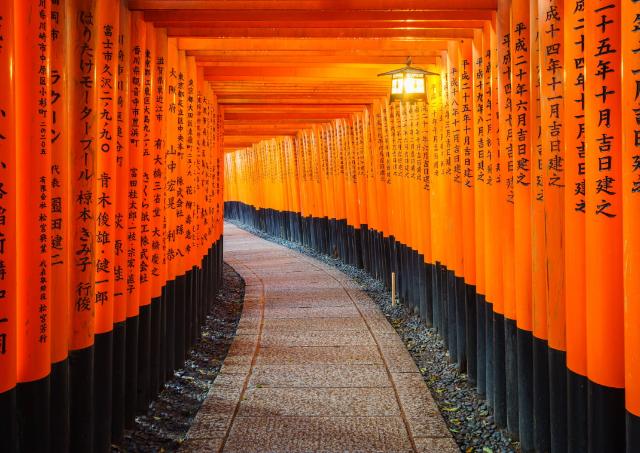
You may also be interested in these articles
Japan nightlife. The images that term conjures are universally recognized. Neon upon neon! As beautiful as Japan is in the day, it becomes an electric rainbow once […]
Going to the museum with children can become a daunting experience, but missing amazing places to learn about Japanese culture when in Japan would be a terrible […]
In Japan, there is no shortage of fun characters and impressive world building in manga and anime, but it doesn’t stop there! Immerse yourself in fictional worlds or […]

